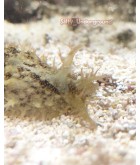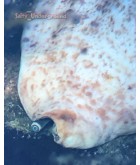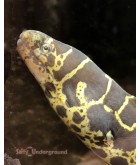Introduction
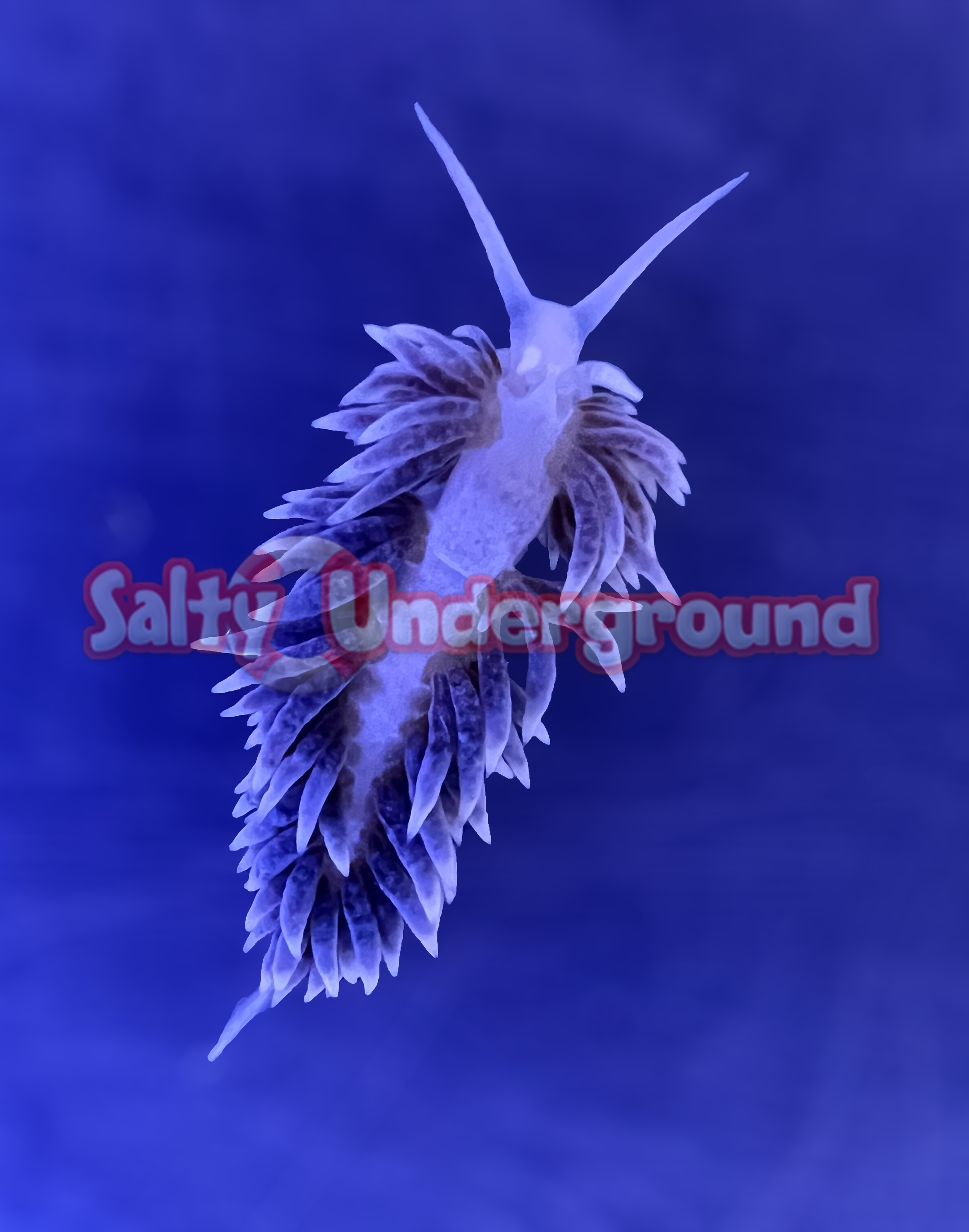
Today’s saltwater aquarium enthusiasts strive to maintain a natural balance within their saltwater aquariums. We spend countless hours measuring and balancing saltwater parameters and selecting suitable marine inhabits that will coexist with each other, all to achieve the beautifully balanced environment that is a natural reef aqurium.
Then something happens that threatens that natural aquarium balance.
Enter the Aiptasia Anemone. While part of the ocean’s natural fauna, this invasive creature is capable of entirely upsetting the natural balance of our reef aquariums.
Jump to:
- The Pest called Aiptasia
- Why choose Berghia Nudibranch?
- The True Natural Solution
- Acclimation Process
- What to expect in your Tank
- Effectiveness of the Berghia Nudibranch
- How long will it take for the Berghia to clean my tank of Aiptasia?
- Laying Eggs of the Berghia Nudibranch
- Keeping your Berghia Safe
- Conclusion
- Contact Us
Video
The Pest Called Aiptasia
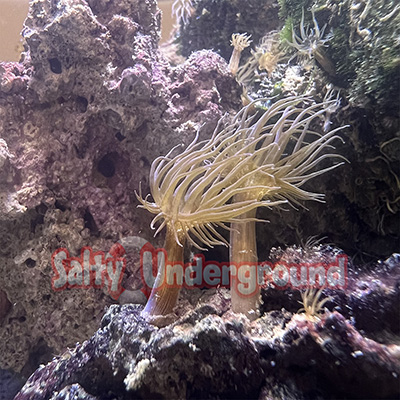
To best understand the Berghia nudibranch, we must first have an understanding of its prey, the Aiptasia sp. Anemone. (Complete information on Aiptasia is available in our Aiptasia Information section)
True to their name, Aiptasia sp. Anemones (which means ‘beautiful’) are elegant creatures, but they are also invasive and aggressive competitors in the reef aquarium. Left unchecked, they will often totally over-run a marine aquarium stinging any near by corals requiring apitasia anemone control.
When Aiptasia are disturbed (either by a passing fish or invertebrate) they eject dangerous white stinging threads that contain venomous cells called nematocyst. These nematocysts are capable of delivering a potent sting that can cause tissue regression in sessile corals, immobilize prey, and even kill unlucky crabs, snails or fish.
The Aiptasia anemone is capable of spreading rapidly in a reef aquarium due to its ability to reproduce both sexually and asexually. The missed fish food particles then caught by the Aiptasia anemone also helps to speed their spread in the home aquarium.
Asexual Reproduction
Aiptasia reproduce asexually by pedal laceration. Small masses of cells are pinched or torn off the margins of the pedal disk at the base of its central column. These grow slowly into buds and within a week or two after completely separating from the foot the bud develops a mouth and small tentacles and begins to feed on its own. Some of these clones will release and be distributed in the water column to colonize other locations in the aquarium. Sometimes near your loved corals. Additionally, Aiptasia demonstrates a preferential tolerance to its own clones and will not sting them. This allows large groupings of Aiptasia clones to form as a result of asexual reproduction.
Unlike some cnidarians, Aiptasia are extremely successful in generating or regenerating an entire animal from just small pieces of a larger aiptasia. It is because of this that physical removal is so difficult to perform successfully. Any piece of Aiptasia anemone not removed can restart the infestation.
Aiptasia have been know to increase asexual reproduction during times of extreme stress. Some of the causes of stress to aiptasia in a reef aquarium are low oxygen, decreased circulation during power failures, low lighting situations, attack by predators or when the saltwater aquarist attempts physical or chemical methods of removal.
Sexual Reproduction
While there is little scientific documentation on the sexual reproduction within Aiptasia, general observations indicate the sexual reproduction may occur in two forms.
In the case of the well-studied Aiptasia pallida and Aiptasia pulchella, individuals are dioecious, meaning that individual Aiptasia are of separate sexes. During spawning, Aiptasia anemones release their gametes into the water where fertilization occurs. The resulting zygote becomes a free swimming planula larva which eventually settles onto a suitable substrate and undergoes metamorphosis to become a Aiptasia anemone small polyp. Newly produced aiptasia larvae are aposymbiotic meaning they do not contain symbionts. The larvae or newly settled polyps acquire symbiotic algae from their aquarium environment.
In certain species of Aiptasia fertilization may be internal, in the coelenteron. Male gametes are released from male Aiptasia into the water column. These gametes are non-buoyant and settle to fertilize the female gametes within other Aiptasia. These fertilized eggs develop internally within the Aiptasia into Planula Larva. As the anemone larvae develop, they receive nourishment from the ‘mother’ Aiptasia. When conditions are optimal (light and nutrients are high), or during physical attack (as when an aquarist is attempting to remove them), these larva are released into the water column to start growing and colonizing other parts of the home aquarium.
Considered by most reef keepers as a pest (and often referred to as the ‘weed’ anemone) this hitchhiker often enters our marine aquarium on a piece of live rock or attached to coral fragments, often too small to see – at first. Then quickly, the Aiptasia begins multiplying, reproducing both sexually and asexually. What began as one or two hitchhikers now becomes a full blown aquarium infestation.
Left unchecked by its natural predators, the Aiptasia anemone will quickly overgrow the reef tank, stinging (often to death) many live corals that it encounters, while posing some risk to fish and invertebrates alike.
So what can be done?
Why Choose Berghia nudibranchs?
So you have discovered that you have one or more Aiptasia living in your reef tank (or many more if you’re like most saltwater aquarium enthusiasts encountering Aiptasia for the first time), what are the options?
‘Quick-Fix’ Chemical Solutions
There are many commercial solutions marketed for the control and elimination of Aiptasia anemones in the marine aquarium. These chemical ‘quick-fixes’ all contain harmful ingredients that will alter your saltwater water chemistry – affecting the pH, alkalinity and various other water parameters to some degree. Some are also deadly toxins, killing not only the Aiptasia they are applied to, but all life they come in contact with. While touted as reef safe, most contain ingredients are harmful to reef aquarium organisms good and bad.
Worse of all, most (if not all) fail to eliminate your problem, and often only make the condition worse by triggering the Aiptasia’s aggressive reproductive system to create even more of the aiptasia pests in your loved reef aquarium.
Natural Predators?
The internet is filled with stories of success and failure associated with several reported Aiptasia predators, with everything from invertebrates like Peppermint shrimp, to saltwater fish like the Copperband butterfly and filefish being proclaimed as the solution for an Aiptasia anemone infestation.
However, the recommended saltwater fish are commonly not reef safe and will browse on various types of soft and stony corals, zoanthids, sea mats, and polyps.
Many of the animals listed naturally feed on various types of both sessile and motile invertebrates, such as desirable sea anemones, feather dusters and other tube worms, clams, sea urchins, and crustaceans.
So basically it’s trading one pest for another.
What’s most important to note about these ‘natural predators’ is that none of them feed on Aiptasia as a primary food source. They all ‘may’ browse on Aiptasia if other sources of nutrition are unavailable, but given an ample alternative, few will resort to consuming the Aiptasia anemone as their main food source.
The True Natural Solution
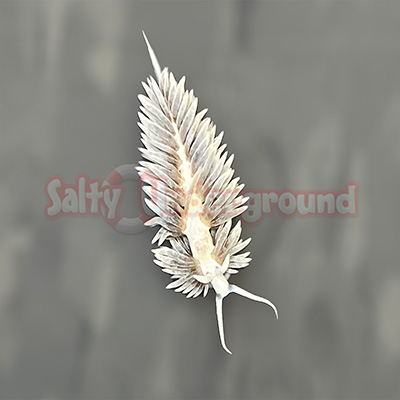
Fortunately, Nature has developed a solution, the Berghia nudibranch (formerly known as Berghia verrucicornis and recently reclassified as a new species Aeolidiella stephanieae). Through millions of years of evolution, the Berghia nudibranch has evolved to feed on the Aiptasia anemone, and only on the Aiptasia anemone. In fact, without Aiptasia present, the nudibranch will starve to death. So unlike all the other ‘natural’ solutions, the Berghia is the only creature guaranteed not to nibble on your prized corals or to harm any other life in your tank.
Because of their small size, they add very little bioload to your reef and will not affect they water quality of your tank.
They are harmless to fish, won’t compete for space or food and being nocturnal, generally go completely unnoticed in a reef tank (except for the steady removal of the Aiptasia).
Size matters
Aiptasia are well adapted to survive in the reef aquarium. Since the Aiptasia anemones do not rely on light as its only source of nutrition, they can be found happily living under live rock, in small crevices and under live coral. All these places can difficult to reach for the reef aquarist armed with a syringe full of anti-Aiptasia chemical, or for Aiptasia browsers like the Copperband butterfly.
But this is where the small size of the Berghia pays off (adults reaching 1 to 1½ inches in length). They are able to crawl into the smallest crevice, under live rock, or underneath large corals to reach the Aiptasia. This is all done without harming the corals or upsetting the aquarium rock work. Unlike any other Aiptasia ‘cures,’ Berghia nudibranchs will consume every last part of the aiptasia anemone, leaving nothing remaining to reproduce and infest the marine aquarium.
Even though the Berghia nudibranchs are small, they will still consume Aiptasia many times larger than they are, eating even very large Aiptasia that other ‘predators’ tend to shy away from.
Strength in Numbers
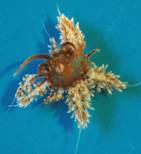
Berghia occasionally reproduce in the saltwater display aquarium. Being hermaphroditic, each mature Berghia nudibranch may mate and lay eggs every day as long as water conditions are good and an amply supply of Aiptasia are available. This allows the Berghia nudibranch to increase their colony size relatively in order to deal with large Aiptasia anemone infestations.
Function and Design
The Berghia nudibranch is also designed to eradicate Aiptasia. The Berghia nudibranch possess specialized sensory organs called rhinophores that are able to chemically detect Aiptasia anemones. This allows the Berghia to target in on Aiptasia, even those anemones too small to be readily seen.
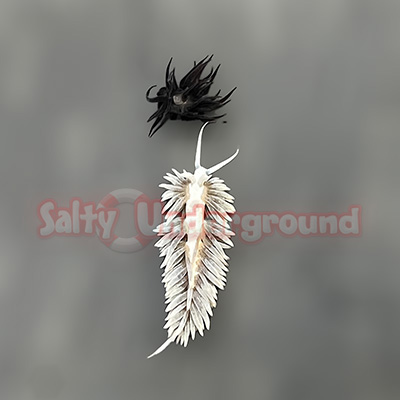
Additionally, the Berghia nudibranchs have evolved a method of approaching the Aiptasia that prevents it from feeling threatened and firing their stinging cells or releasing their planula larva which would result in more Aiptasia in the aquarium. Though the mechanism is not yet fully understood the chemical composition of their mucus changes and does not trigger a discharge of nematocysts in the aiptasia anemone. This interaction has been described as similar to the way in which a clownfish approaches a host anemone.
The result is that ALL the Aiptasia being consumed leaving nothing remaining to reproduce or regenerate new Aiptasia anemones.
Anatomy
Scientific classification
- Kingdom
- Animalia
- Phylum
- Mollusca
- Class
- Gastropoda
- Family
- Aeolidiidae
- Genus
- Aeolidiella
- Species
- stephanieae
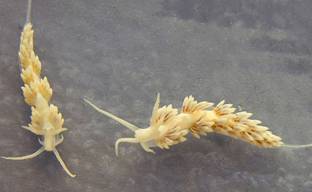
NOTE: First known as Berghia verrucicornis and later reclassified as a new species Aeolidiella stephanieae though currently known by its common name of Berghia nudibranch.
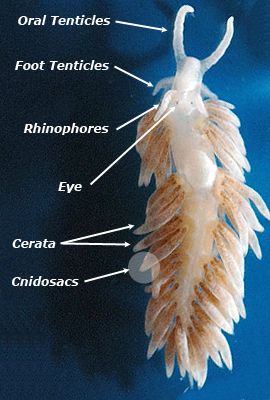
The Berghia species of nudibranch is a sea slug is typically found in shallow waters from 1 to 2 meters in depth and is known to be only from the Florida Keys region. However, due to its popularity in the American marine aquarium trade, most Berghia purchased are captive bred. There are other nudibranch species that also feed on Aiptasia, and which originate from all parts of the globe, however they are not commonly sold, and obtaining them can be difficult.
The adult Berghia are semi-translucent. Juveniles available for purchase in the aquarium trade are typically ¼ - ½ inch in length. “Adults” range in size from ½ to ¾ of an inch in length on average, with fully grown adults ranging in size from 1 to 1½ inches in length.
The ‘head’ of the Berghia has two long oral tentacles. These are used primarily as contact chemoreceptors to taste food quality. Immediately behind the two oral tentacles are the rhinophores. These are typically shorter than the oral tentacles and form a ‘V’ on the head of he nudibranch. The rhinophores are used are distant chemoreceptive sensory organs used to locate distant food sources.
Immediately behind the rhinophores are the ‘eyes’ of the Berghia nudibranch, capable of very rudimentary vision and believed to be used as a means of sensing light.
Covering the ‘back’ of the Berghia, behind the rhinophores, are numerous protrusions know as Cerata. These cerata are considered to be an extension of the digestive system and form two primary functions. The first is as an aid for oxygen exchange (similar to gills). In addition, they also contain cnidosacs at the tips of the cerata.
These cnidosacs are used as a defensive mechanism and contain re-cycled nematocysts (or stinging cells) that the Berghia has acquired from the Aiptasia they consume. The Berghia ingest immature nematocyst from the Aiptasia anemone then allow them to mature in these cnidosacs. The Berghia are able to encase un-discharged nematocysts within a phagosome which are then stored in these muscularized chambers, called cnidosacs, which are located at the tips of the cerata. When under threat or attack, the Berghia is capable of ejecting their cerata. (NOTE: The Berghia will not sting aggressively like the Aiptasia anemone.)
Berghia nudibranchs have been shown to harbor the Zooxanthellae, the photosynthetic symbiotic algae found in corals. While utilizing a very primitive form of symbiosis, the Berghia are able to capture zooxanthellae from the Aiptasia. Research has shown that these symbionts continue to perform high levels of photosynthesis and remain in the Berghia’s cerata for as much as 6 days before being excreted. Regular feeding helps the Berghia maintain an active supply of zooxanthellae; however, due to the primitive form of symbiosis, the zooxanthellae are insufficient to prevent starvation of the Berghia in the absence of a Aiptasia anemones.
Life Cycle
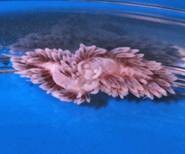
Berghia nudibranchs are hermaphroditic, with each nudibranch possessing both female and male reproductive organs. However, the Berghia requires a second individual to mate with in order to fertilize the eggs. (Image at left is of two Berghia mating)
Young Berghia may begin laying eggs as Juveniles as early as 28 days old. Eggs are laid in a spiraling strip referred to as an ‘egg ribbon’.
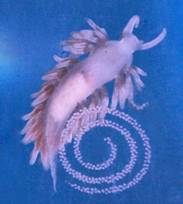
In the image to the right, you can see the egg ribbon. The eggs ribbons are typically laid in concealed places, such as on the underside of the live rock, or beneath a large live coral.
While egg laying begins in the juvenile stage of development, egg development is low (approximately 60-80 embryos in an egg cluster) and fertilization often incomplete.
After 60 days, the Berghia reaches sexual maturity and is capable of laying 1000 to 2000 embryos in a single ribbon with near 100% fertilization.
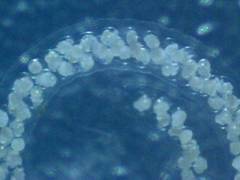
The time required for the eggs to hatch varies by species of nudibranch, as well as the water temperature during development. The Berghia eggs usually hatch in about 10-14 days with the newly hatched Berghia emerging as both free-swimming veliger larvae and fully metamorphosed juveniles. The form the hatchlings take is based on external factors present during their development within the egg (such as agitation of the eggs). This duel form of development allows the Berghia to increase its population within the immediate area, as well as spread to other areas.
Those Berghia nudibranchs that hatch as veliger larvae swim using cilia and are approximately 100 micrometers in size. Usually one day after hatching these berghia larvae settle on the bottom and retract into the larval shell. During the process of metamorphosis, which does not take longer than 48 hours, the beghia then cast off their larval shell. Within 24 hours after metamorphosis the early juveniles start to crawl, though they are not yet actively feeding on aiptasia. At this time rhinophores begin to develop on the larva. As development proceeds, body elongation increases and more pairs of cerata are formed.
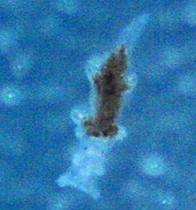
Around 48 hours after metamorphosis, the larva, now juvenile Berghia, begin to actively feed on Aiptasia.
At this stage the juvenile Berghia are approximately 600 microns long.
As the image at the right shows, they are nearly invisible, not yet having acquired their pigmentation, which is harvested from the Aiptasia anemones they consume.
The actual life span of the Berghia nudibranch is around 10 to 12 months if provided plenty on aiptasia anemones to eat. Lacking a readily available aiptasia, Berghia will starve to death within 5-7 days.
The Berghia Acclimation Process
Berghia nudibranchs are fairly hardy and not are extremely sensitive to dramatic changes in water parameters. Being an invertibrate it is still important to carefully acclimate them to your tank so that they have sufficient time to adjust to the new water parameters for best results. Please refer to the Berghia Acclimation Guidelines for more information on doing this.
What to expect in Your Tank
We recommend at least 8 Berghia per 100 gallons of water for a moderate to heavy Aiptasia problem (50-100 Aiptasia per 100 gallons). Getting the right number of Berghia is important. You want to have enough Berghia in your saltwater aquarium so they can find each other to mate and lay eggs. Although the berghia eggs are frequently eaten before they hatch, they do sometimes hatch and continue to populate the tank until all the Aiptasia anemones are gone. Heavier Aiptasia outbreaks may require a larger number of Berghia initially than smaller ones. This will allow the berghia nudibranchs to consumes the aiptasia anemones faster than they can reproduce.
Are Berghia nudibranchs 100% effective all of the time?
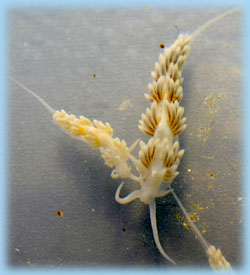
Berghia are sea slugs. This means they thrive best in good aquarium conditions to which includ good water quality (under 25ppm of nitrates, 0 ammonia and 0 nitrites), a lack of predators and water current that allows them to cling to the live rock while moving from one Aiptasia to another.
If you only have 6 to 8 Aiptasia in a larger aquarium (more than 30 gallons), we do not recommend using berghia nudibranchs for aiptasia control. The Berghia may starve before they can find all of the Aiptasia in your reef tank. We recommend using Berghia for a moderate to heavy Aiptasia problem.
While berghia are an excellent hunter, there are places where the Berghia nudibranchs can not get. Some of the places in your aquarium are power-heads, filter tubing, inside of overflows, and any other areas (like the sump) where Aiptasia may be hiding. These areas are usually inaccessible to the Berghia and may harbor Aiptasia that would be capable of re-spawning another epidemic in your tank.
How long will it take for the Berghia to clean my tank of Aiptasia?

It depends on the number of Berghia nudibranchs in the aquarium, the size of your reef aquarium and degree of the Aiptasia problem. We recommend at least 8 Berghia per 100 gallons of water for a moderate to heavy Aiptasia problem (50-100 Aiptasia per 100 gallons). It takes about 2-3 months for the Berghia to clean the reef tank if you use this formula. It may take a few weeks before you begin to see a difference in the Aiptasia population. Berghia nudibranchs are not an overnight aiptasia removal fix.
Berghia laying eggs

Assuming water conditions are right in your aquarium and the berghia eggs are not eaten by saltwater livestock (like Peppermint Shrimp, snails, crabs, copepods, minibrittle stars, etc.), the Berghia may be able to reproduce within your aquarium. It takes about 4-6 weeks from the time the eggs are laid to the time you will be able to see the new Berghia with the naked eye in your tank. Your first tip off may be that you notice the Aiptasia disappearing more quickly, or you can count more Berghia in your aquarium than you bought.
Keeping Your Berghia Safe
Please keep in mind there are times when livestock considered "reef safe" do not act as expected. But, generally speaking, the saltwater inhabitants below are those you should be most concerned about when adding Berghia.
Care should be taken with any saltwater fish that aggressively hunts the live rock at night for food other than algae, including some wrasses, butterflyfish, filefish and some dottybacks. It's hard to predict fish behavior. As a general rule if your fish spends a lot of time "hunting" your reef on a regular basis, especially at night, it is suspect for hunting Berghia.
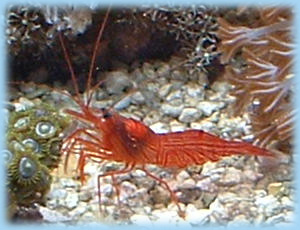
Other livestock that may prey on Berghia include:
Shrimp that scavenge at night: Peppermint shrimp are the most serious and common threat and, also coral banded shrimp (does not include cleaner or fire shrimp).
Aggressive crabs that scavenge for food: Sally lightfoot crabs, arrow crabs, pom pom crabs, live rock crab hitchhikers and emerald crabs that have no algae to eat (does not include emerald crabs with algae available to eat or any hermit crabs).
Also, Aiptasia may eat a Berghia nudibranch if it is accidentally dropped directly into the Aiptasia’s mouth area. So be careful when adding them to your tank.
Conclusion
The Berghia nudibranch is Nature’s one true solution to an Aiptasia anemone invasion. With the correctly sized Berghia colony and time, the Berghia nudibranch is quite capable of eliminating every Aiptasia from your aquarium.
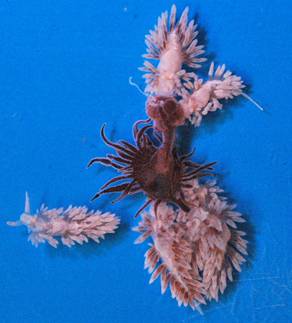
But bear in mind, our reef tanks are not part of nature. They are constructs create to mimic a natural environment and as such, care must be taken to ensure that the proper conditions exist for the Berghia to be successful. This includes proper water parameters, careful handling and the absence of aggressive predators that may harm the Berghia.
Given proper care, time and patience, your Aiptasia problem can be solved without risking the finely balanced ecosystem of your reef aquarium.
For more information on the Berghia nudibranch for Aiptasia control, or to order your own
call us at 314-756-2259


